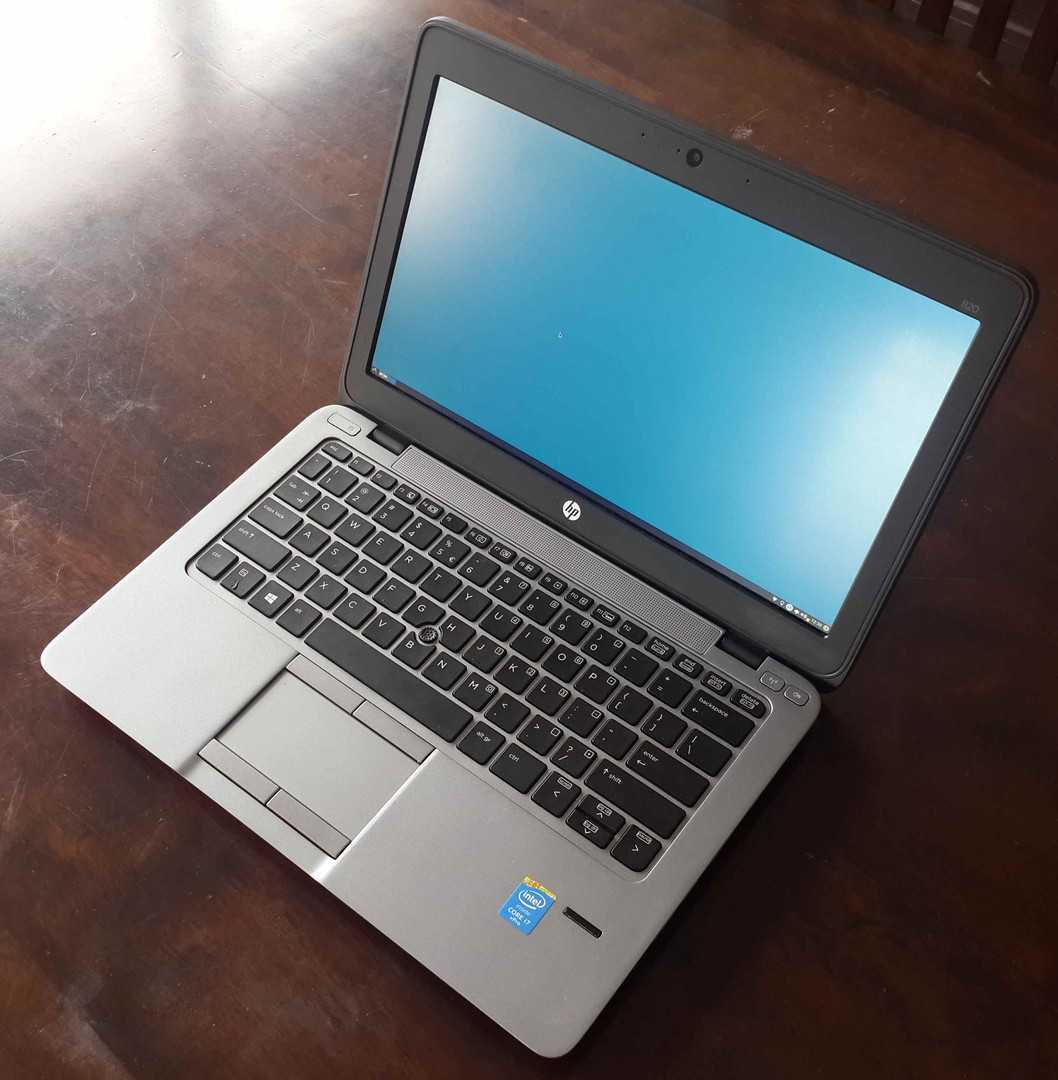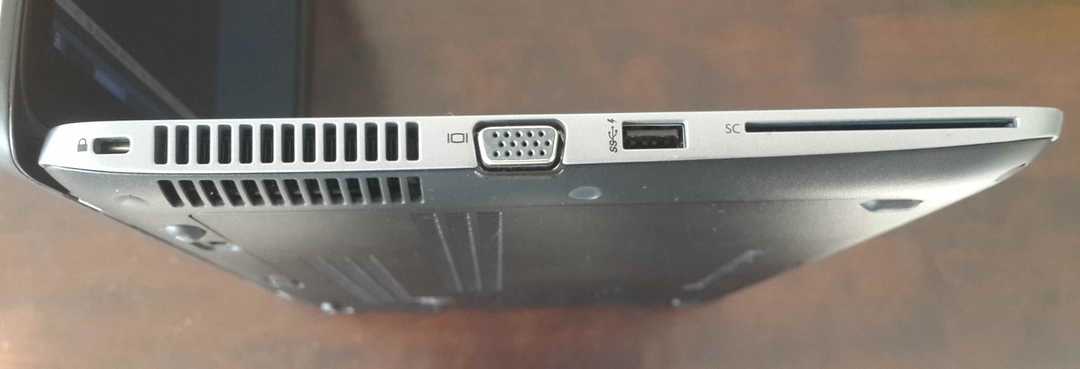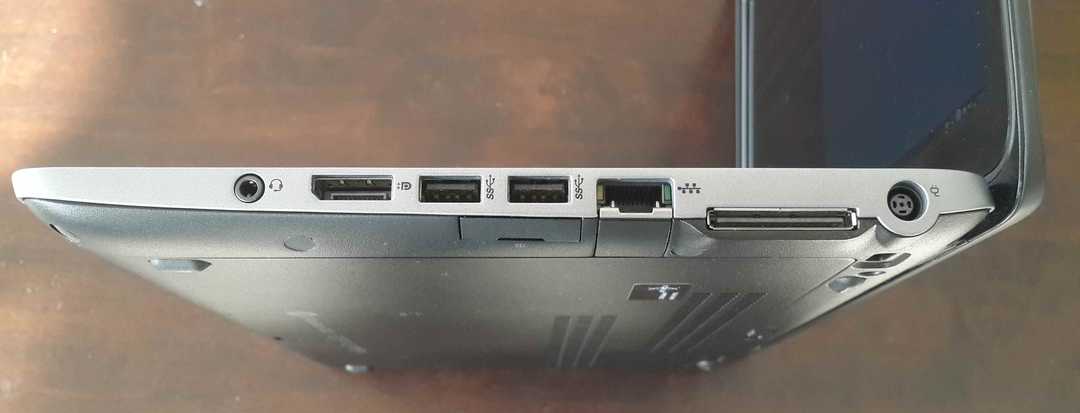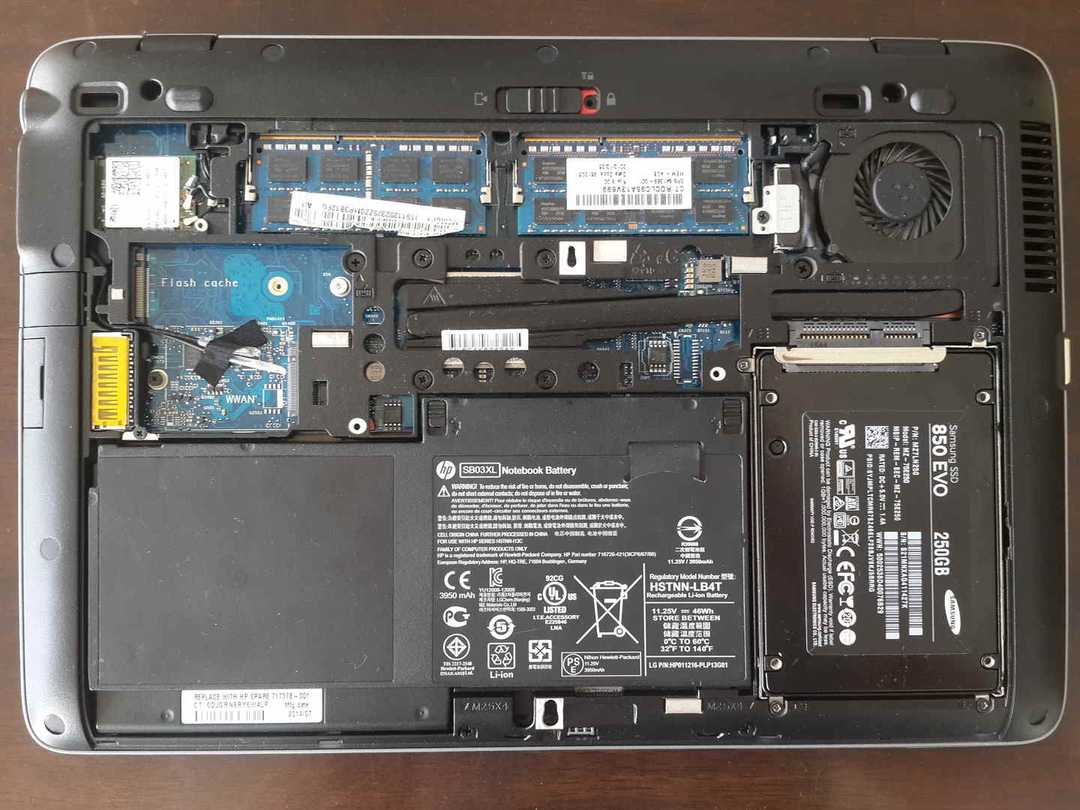I don't often see HP laptops being mentioned as viable options to run GNU/Linux on, so here is review of this particular model.
Technical Specifications
Here are the details straight from HP, one even mentions Ubuntu Linux:
http://www8.hp.com/h20195/v2/GetPDF.aspx/c04472791.pdf
http://support.hp.com/za-en/document/c04543486
http://support.hp.com/za-en/document/c04543492
If you had a look at those links you would see that the laptop's configuration is variable. The one I have is fitted with these components:
CPU: 5th Generation Intel Core i7-5600U 2.6 GHz (max turbo frequency 3.2-GHz), 4 MB L3 Cache, 15W.
RAM: 8GB
Storage: 256 GB SSD
Display: 12.5-in diagonal LED-backlit FHD anti-glare UWVA ultra slim (1920 x 1080) with camera
Operating System
OS: Arch Linux x86_64
Kernel Release: 4.7.2-1-ARCH
Window Manager: Openbox
Desktop Environment: LXDE. I have also run Gnome 3 with no issues.
Size
For a laptop with a 12.5" display it does not feel tiny when you are using it. You definitely notice the size when you put it next to a laptop with a 13" or 14" display. Setting the font size correctly for your eyesight and taste is very important. The laptop is maybe a little bit heavier than you would expect. That said, it is comfortable to carry around and very nice to use on an airplane. Having easy access to the internals, 2x RAM DIMMs, a 2.5" drive and a m.2 slot for additional storage is worth the extra weight in my opinion.
The model I have has full 1080p display so everything is nice and crisp.
Display
I rarely use the display at it's max brightness as it is brighter than I require. The extra brightness would be useful in an outdoors environment. The display is matte so there is minimal annoying reflective glare. The color reproduction isn't the best in the world. With this and the size of the display, I wouldn't recommend this laptop if your main use case is media consumption or graphic design work. There is a fairly sizable bezel around the screen but it doesn't bother me.
Keyboard
The keyboard is nice but not excellent. I am not a big fan of the flat macbook style keys, but I don't hate typing on this keyboard. I'm growing more accustomed to it as I spend more time with it. Something to note is that the keyboard does not have a menu key. Also, there are no dedicated keys for Page Up and Page Down. They are reached by using fn+up and fn+down.
The keyboard backlight is manually operated. It does not automatically turn on in a low light environment as from what I can tell, the laptop does not has a light sensor. My wife's Sony Vaio laptop has a light sensor and it is a very handy having the backlight come on automatically when needed. The keyboard backlight has two brightness settings, bight and slightly dimmer. I seem to always use the slightly dimmer setting. It does not seem possible to script turning the backlight on or off as X does not recieve an event when you push the key combination fn+f11. Also, I couldn't get this script to work. You can set the keyboard backlight timeout in the BIOS. I set mine to 5 sec with the aim of conserving a little bit more battery. Using the trackpoint or touchpad turns the back-light on. A bit unnecessary if you ask me.
Fingerprint Sensor
The fingerprint sensor does not work out of the box. I have seen some people who have written patches to get it working but I have not attempted compiling any of these patches. If I manage to get it working I'll update this article.
Touchpad and Trackpoint
I have done some configuration to get the touchpad working to my liking. It works quite well by default but I wanted it to respond more reliably to lower pressure.
Here is my xorg configuration file located at /etc/X11/xorg.conf.d/70-synaptics.conf
Section "InputClass"
Identifier "touchpad"
Driver "synaptics"
MatchIsTouchpad "on"
Option "TapButton1" "1"
Option "TapButton2" "3"
Option "TapButton3" "2"
Option "VertEdgeScroll" "off"
Option "VertTwoFingerScroll" "on"
Option "HorizEdgeScroll" "off"
Option "HorizTwoFingerScroll" "on"
Option "CircularScrolling" "off"
Option "CircScrollTrigger" "2"
Option "EmulateTwoFingerMinZ" "40"
Option "EmulateTwoFingerMinW" "8"
Option "CoastingSpeed" "0"
Option "FingerLow" "20"
Option "FingerHigh" "30"
Option "MaxTapTime" "125"
EndSection
On my model, the trackpoint's plastic cover gets dislodged and comes off fairly easily. It may just be the particular one I have but I get the feeling that if a trackpoint is vital to you, you may want to try this one out before you buy. I find the touchpad on this model to be very good so a sub-par trackpoint is not an issue for me as generally prefer a touchpad over a trackpoint.
Battery Life
With TLP I can get around 6 hours of battery life with light use. Light use being web development, email, browsing etc. I set the brightness manually to a comfortable level based on the environment and the time of day. The laptop I have has an i7 so compiling a kernel or ruining a CPU intensive task reduces the battery life substantially.
The wireless card that came with my laptop did not work well with the wireless powersaving setting that TLP enabled by default on battery power. I was getting periodic dropouts. The specific wireless card I have, according to lspci is: Intel Corporation Wireless 7265 (rev 48).
To disable TLP's powersaving for the wireless card, make the following adjustment in /etc/default/tlp:
WIFI_PWR_ON_BAT=off
To turn off power saving for the current session you can run: sudo iwconfig wlo1 power off
You'll need to substitute wlo1 with your wireless adapters name.
I/O Ports
Left hand side
VGA
USB 3.0 with charging
SC slot
Right hand side
Charging port
HP Docking port
Ethernet
2 x USB 3.0
SD Card slot
Display port
Headphone+mic combo jack
Fan and Noise
The fan is completely off most of the time. It comes on when the CPU starts really crunching. When it is on it is noticeable but not overly distracting. In a very quiet environment, you can hear a faint coil noise/whine. Most of the time it is not noticeable and even when it is I don't find it an issue.
Speakers and Audio
They are not terrible for their size. As to be expected, there is no bass. Anything below around 100Hz in not audible. They are loud enough for most media consumption, but for some more dynamic movies, they are can be to quiet. The mute microphone button does not send any events to xev so it can not be used to toggle the microphone state. One could assign another key combination to this task. The LED in the mute microphone button did work under Gnome 3 when the microphone was muted.
Performance
My two main use cases are web development and music production with Ardour. In both of these use cases, I have yet to feel like the laptop is underpowered. If you need a more powerful GPU for gaming or video production for example, you probably want to look elsewhere. That said, I have played Warsow and have done some video editing in Blender on this machine without and show stopping performance issues. Also if you require more than 16GB of RAM you will need to look elsewhere.
Under The Hood
Getting to the internals of this laptop is very easy. You just slide a switch to unlock the back cover and then pull it off. It takes about 10 seconds. From there you have easy access to the 2x RAM DIMMs, 2.5" Drive, M.2 slot, Wireless and WAN card slots. I plan to upgrade the RAM from 8GB to the max of 16GB when/if necessary. I also plan to install a m.2 SSD drive for some additional storage when the pice of these drives decrease.
Final Thoughts
Overall, I've been very happy with this laptop. Provided you can get it at a reasonable price, and you're not interested in running graphically intensive games/applications, I'd recommend it wholeheartedly.




